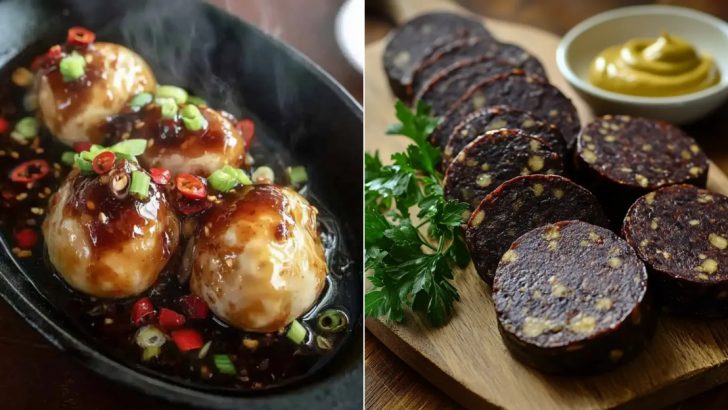Some dishes sound like a challenge, a test of your culinary courage, but trust us—once you take that leap, you’ll be transported to a world of unexpected flavors.
These 17 daring dream dishes may sound wild, but they’ll have you hooked from the first bite, leaving you craving more and wondering why you ever hesitated.
17. Blood Pudding
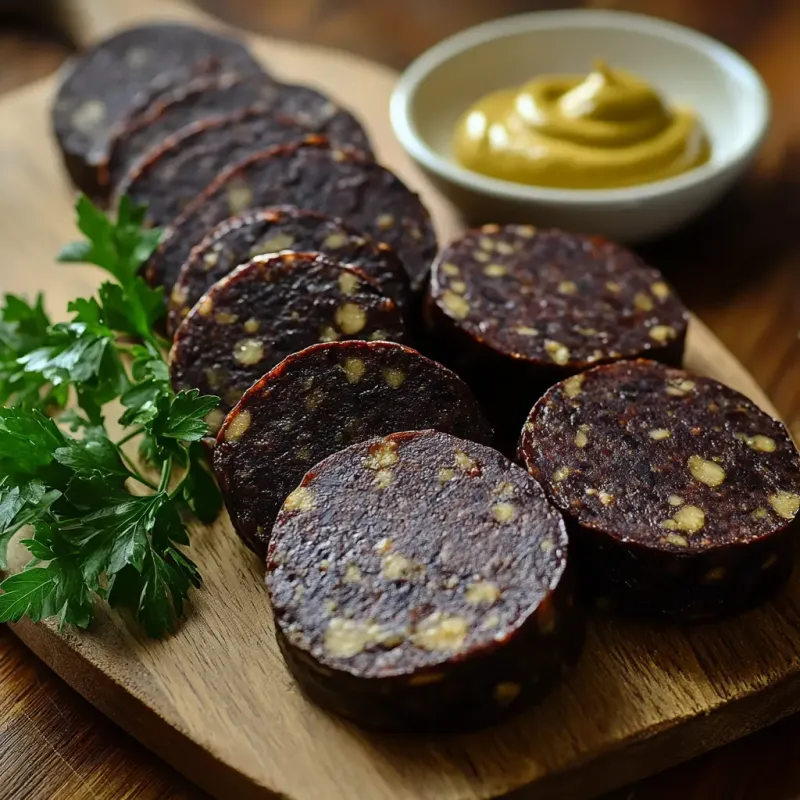
Forget everything you think you know about pudding! This savory British staple combines pork blood with oatmeal, fat, and spices to create a rich, dense sausage that’s sliced and fried.
The earthy, mineral flavor has converted countless skeptics who dared to look beyond the name. For breakfast lovers seeking something hearty with a side of courage, blood pudding delivers a surprisingly complex taste experience.
16. Century Eggs
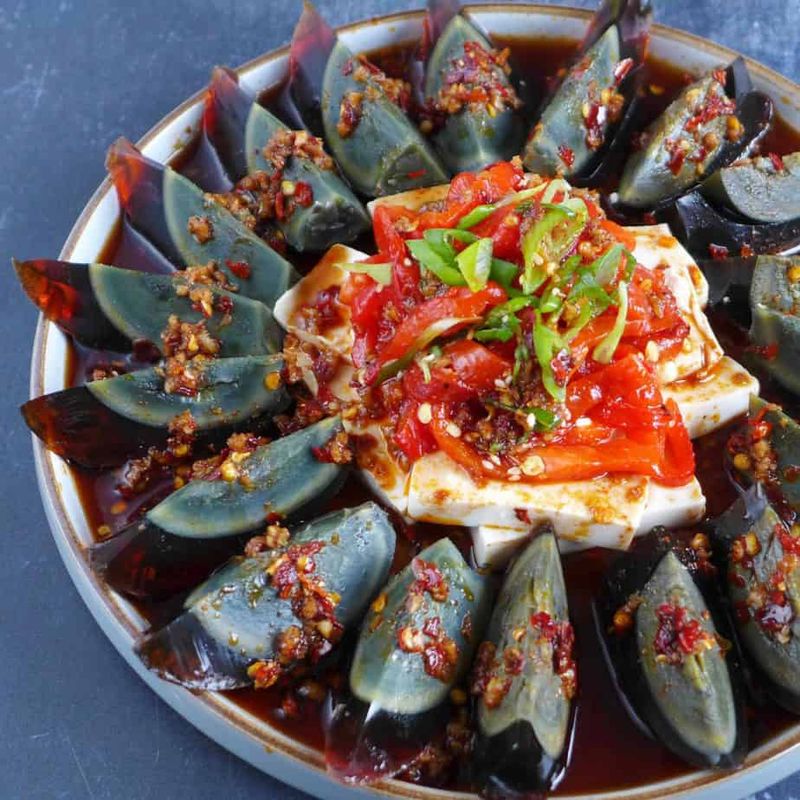
What if I told you these preserved duck eggs aren’t actually 100 years old? Though their translucent dark green-gray appearance might suggest otherwise! Created through a preservation process using clay, ash, and salt for several weeks.
The result? A creamy, cheese-like center with complex umami flavors that bear no resemblance to regular eggs. Chinese cuisine celebrates these gems in congee and tofu dishes, proving appearances can be delightfully deceiving!
15. Hákarl (Fermented Shark)
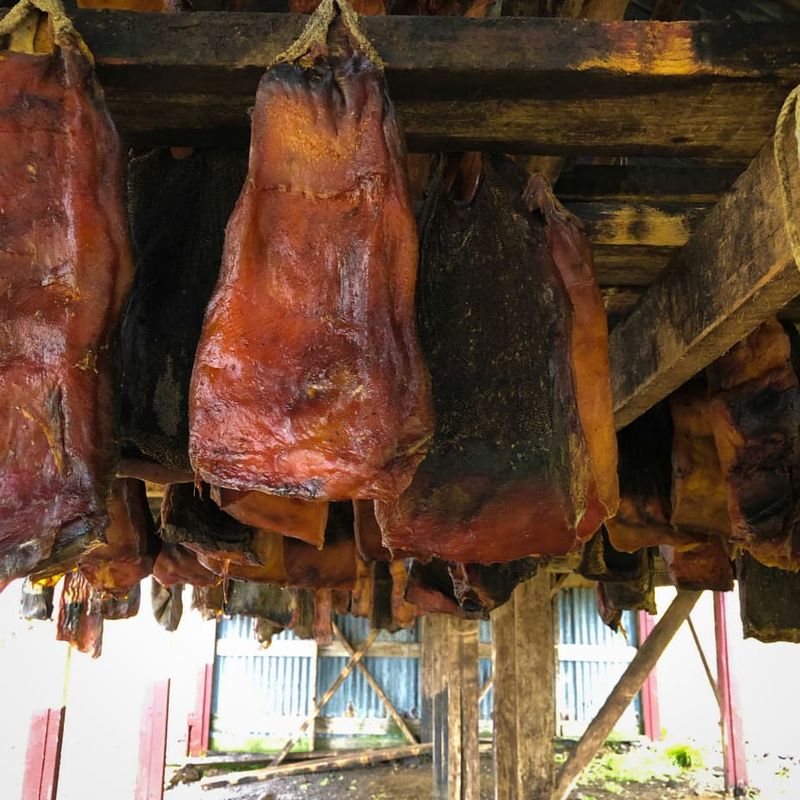
Iceland’s notorious national dish makes even adventurous eaters pause. Greenland shark meat, naturally poisonous when fresh, undergoes a fascinating fermentation process lasting months before becoming edible.
Though the smell of ammonia might knock you back a few steps, brave souls who power through are rewarded with a cheesy, nutty flavor that’s surprisingly mild compared to its reputation. Anthony Bourdain once called it “the single worst thing” he’d ever tasted – challenge accepted?
14. Casu Marzu
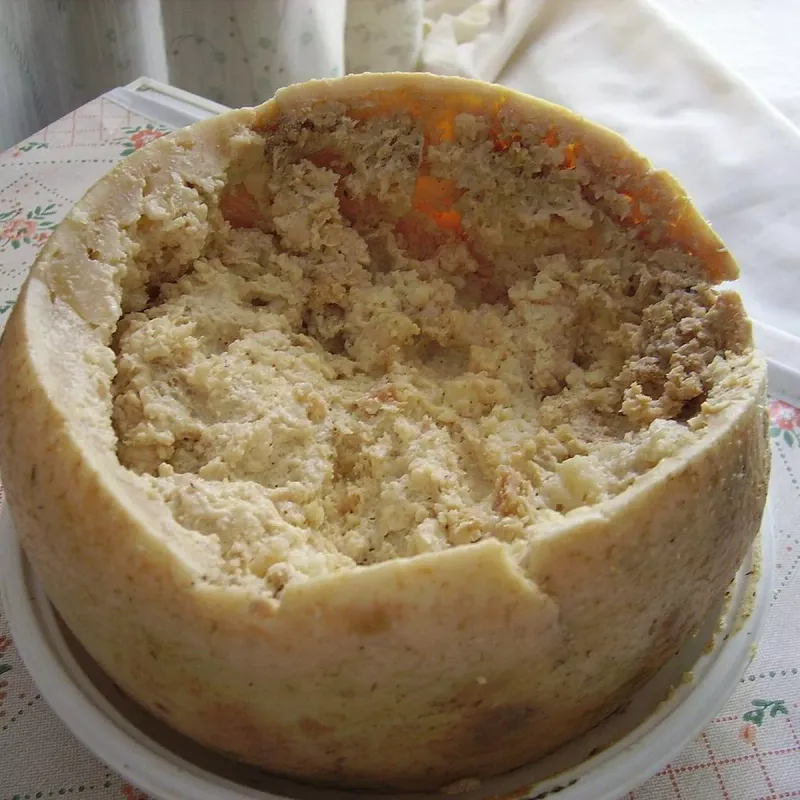
Hold onto your stomachs, folks! This Sardinian sheep’s milk cheese deliberately contains live insect larvae that actively decompose the cheese, creating a soft, liquidy texture that some describe as “dancing” on your tongue.
Banned in many countries yet cherished as a delicacy in Sardinia, brave cheese connoisseurs rave about its intense flavor – sharp, spicy, and earthy all at once. Would you try a cheese that can literally jump off your plate?
13. Fugu (Pufferfish)
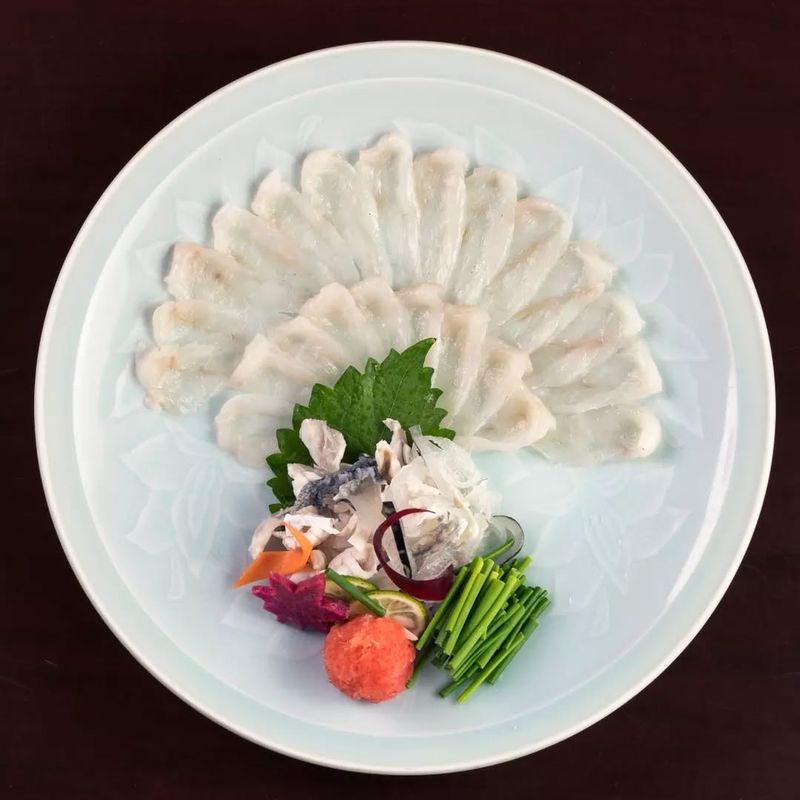
Thrill-seekers, gather ’round! Japan’s infamous pufferfish contains tetrodotoxin – a poison 1,200 times deadlier than cyanide with no known antidote. Only specially licensed chefs can prepare it after years of rigorous training.
The translucent, paper-thin slices offer a subtle, delicate flavor and unique texture that tingles slightly as you eat. Is the mild numbness from toxins or just your imagination? The high-stakes dining experience makes this dangerous delicacy unforgettable!
12. Stinky Tofu
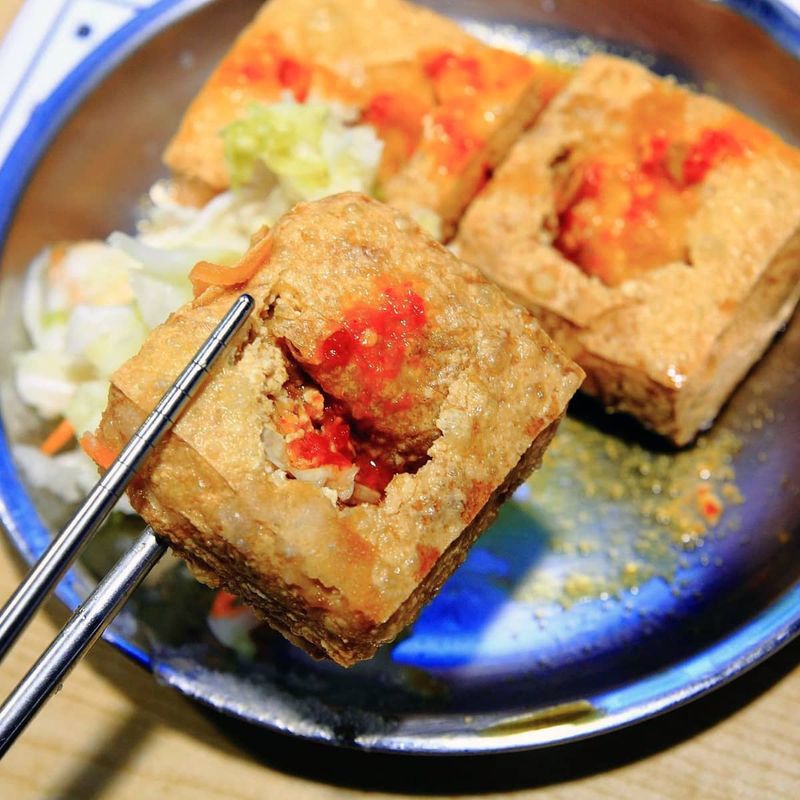
You’ll smell it from a block away before you even see it! This Taiwanese night market staple ferments regular tofu in a brine of vegetables, meat, and sometimes seafood for weeks or months until it develops its signature eye-watering aroma.
Deep-fried to crispy perfection and topped with tangy sauce, the contrast between the funky exterior and creamy interior creates a flavor explosion that’s utterly addictive. Ready to hold your nose and take a bite?
11. Rocky Mountain Oysters
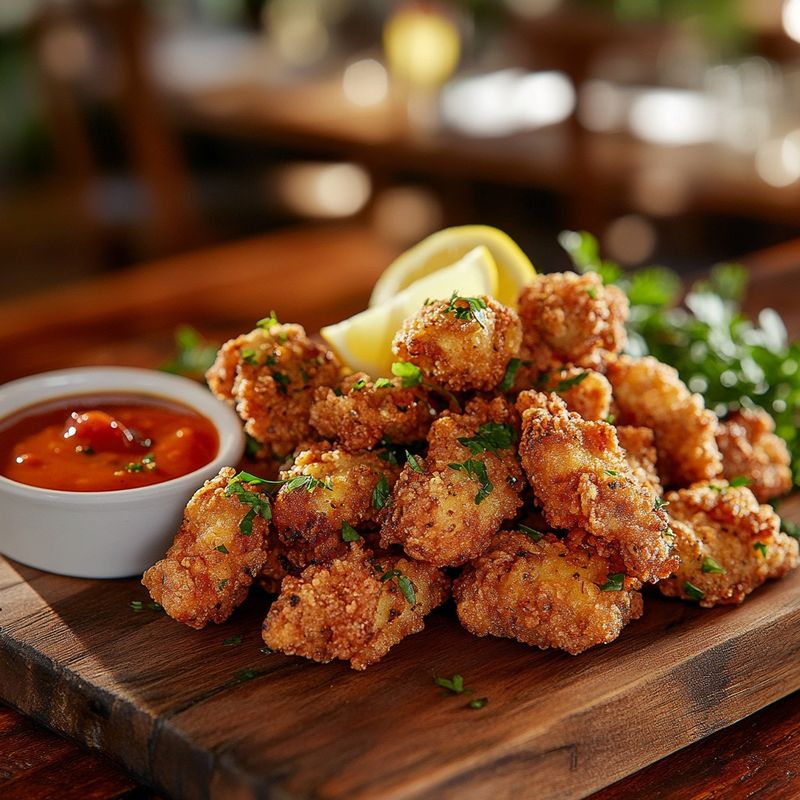
Surprise! These aren’t seafood at all. Bull testicles – yes, you read that right – are sliced, breaded, and deep-fried to create this Western American delicacy that’s been fooling unsuspecting tourists for generations.
Behind the intimidating ingredient lies a tender, mild-tasting meat similar to veal cutlets with a slightly gamey finish. Served with cocktail sauce or hot sauce, they’re a genuine cowboy tradition worth trying. Dare your friends to sample some without telling them what they are!
10. Durian
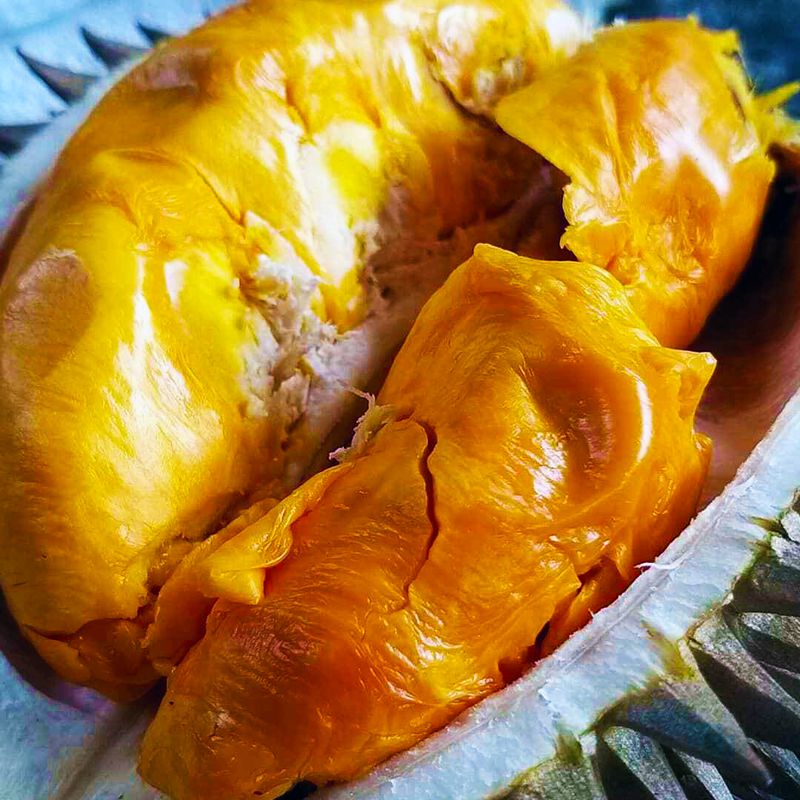
Banned from public transportation and hotels across Southeast Asia, this spiky fruit’s smell has been compared to gym socks, rotting onions, and sewage. Yet durian inspires cult-like devotion among fans who call it the “king of fruits.”
Cut through that horrific aroma and you’ll discover custard-like flesh with a complex sweetness resembling vanilla ice cream mixed with caramelized onions. The contrast between smell and taste creates such cognitive dissonance that you might just become obsessed!
9. Escamoles (Ant Eggs)
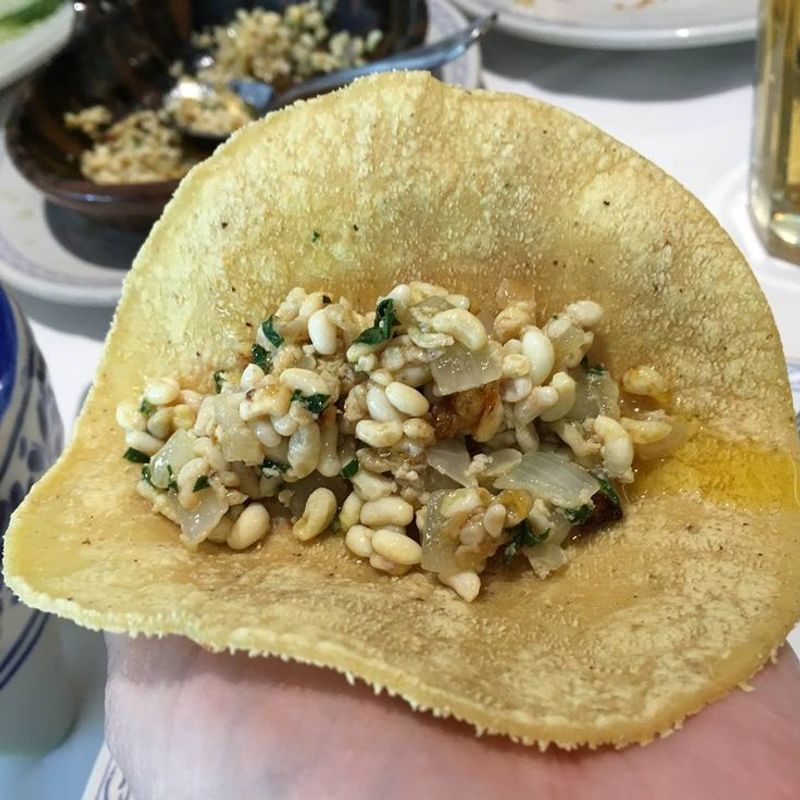
Mexico’s “insect caviar” harvests the eggs of giant black Liometopum ants from agave plant roots, creating one of the world’s most expensive delicacies. These tiny white or translucent pearls look eerily like pine nuts or risotto.
Though the concept might make you squirm, the flavor is surprisingly buttery and nutty with a slight pop similar to caviar. Traditionally sautéed with butter and spices or folded into tacos, this pre-Hispanic delicacy proves insects can be gourmet!
8. Surströmming
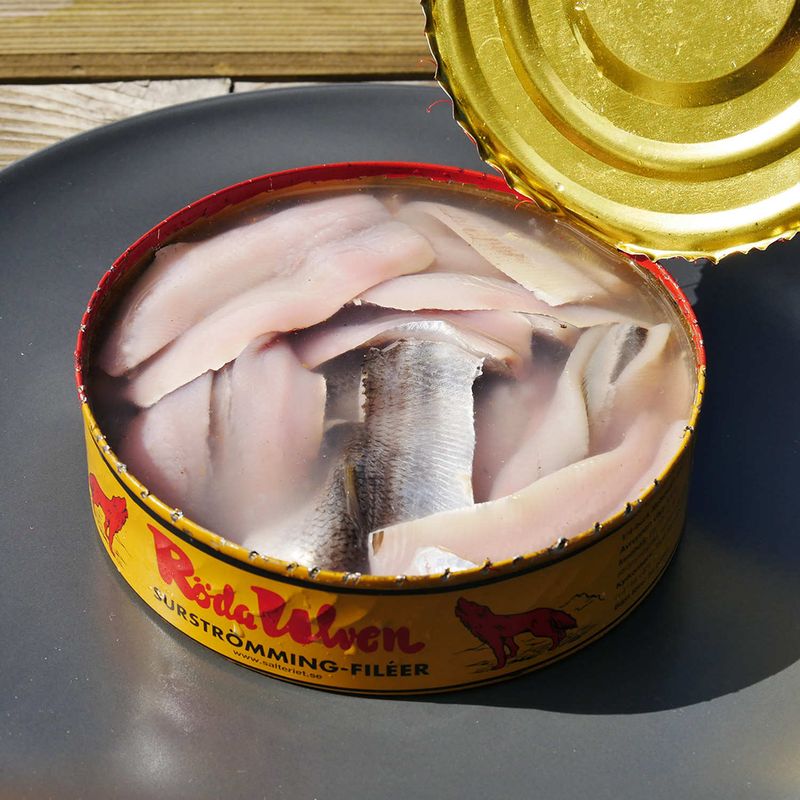
Sweden’s fermented herring comes in bulging cans that should only be opened underwater or outdoors due to the catastrophic smell – often described as the world’s most pungent food. The fermentation process continues for months until the fish is acidic enough to melt your nose hairs!
Locals enjoy it on crisp bread with potatoes, onions, and sour cream to balance the intense fishiness. The taste? Surprisingly milder than the smell, with a savory umami quality that’s strangely addictive once you get past the initial shock.
7. Balut
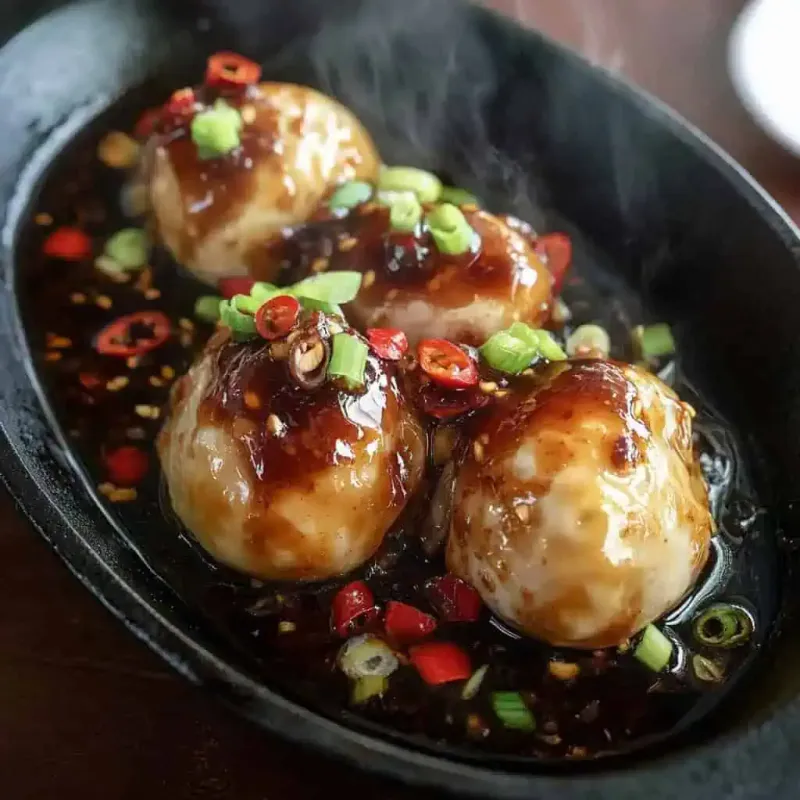
Cracking open a balut egg reveals what might haunt your nightmares: a partially developed duck embryo, complete with visible beak, feathers, and bones. This Filipino street food is fertilized duck egg boiled alive between 16-20 days of development.
Seasoned with salt, vinegar, and chili, adventurous eaters first sip the savory broth surrounding the embryo, then devour the entire contents. The surprising combination of egg yolk richness and tender meat creates a unique textural experience beloved throughout Southeast Asia!
6. Haggis
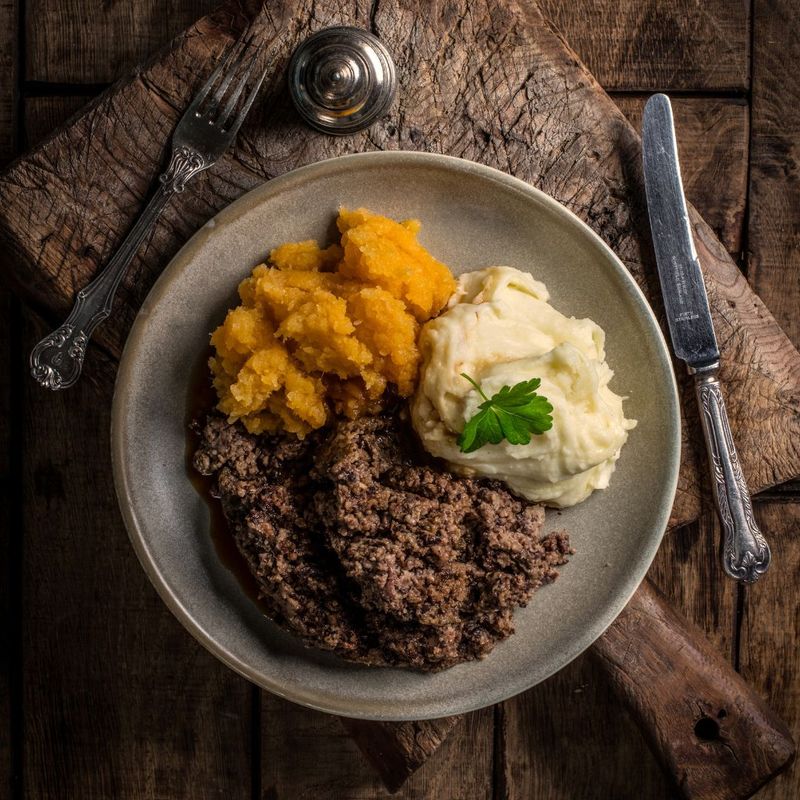
Using oatmeal, suet, and spices, Scotland’s national dish stuffs a sheep’s heart, liver, and lungs into its stomach. Though it looks like an unappetizing gray blob, appearances couldn’t be more deceiving!
The nutty, savory flavor profile has earned haggis devoted fans worldwide, despite being banned in the United States until recently. Served with “neeps and tatties” (turnips and potatoes), its hearty, complex taste makes perfect sense after a dram of whisky in the Scottish Highlands.
5. Nattō
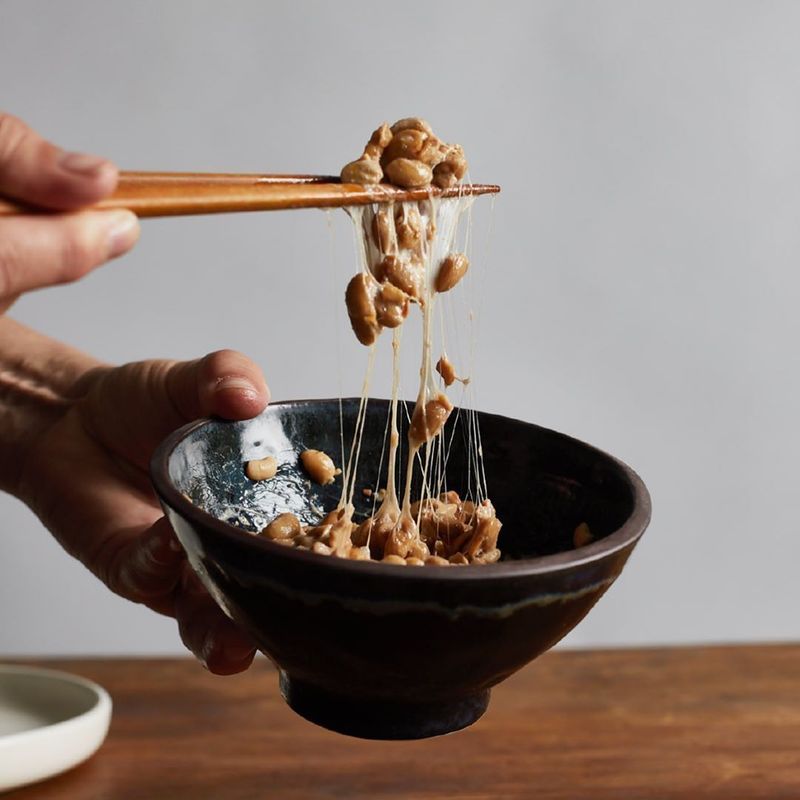
Japan’s notorious breakfast food transforms ordinary soybeans into something extraordinary through fermentation with Bacillus subtilis bacteria. The result? Beans connected by sticky, stringy, spider-web-like strands that stretch several inches when lifted with chopsticks.
The pungent aroma reminds many of gym socks, while the slimy texture challenges Western palates. Yet millions of Japanese start their day with this nutritional powerhouse, enjoying its nutty, earthy taste mixed with rice, raw egg, and green onions.
4. Jellied Eels
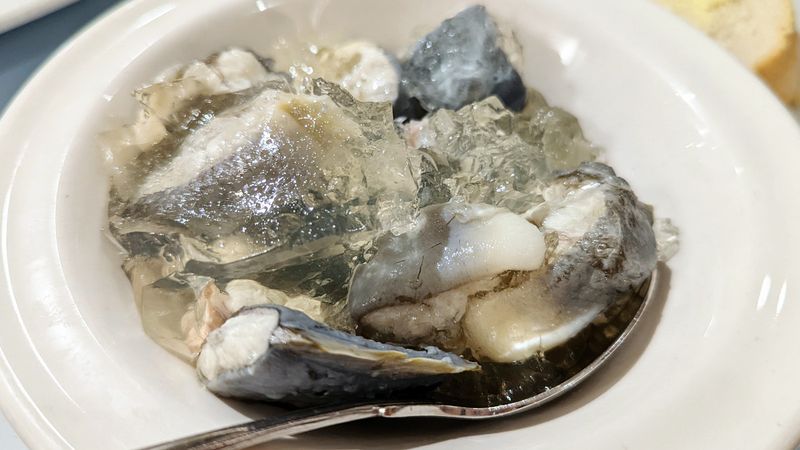
It looks like something from an extraterrestrial autopsy, a favorite of the working class in London’s East End since the 18th century. Chopped eels cooked in a spiced stock naturally release collagen as they cool, creating a savory, quivering jelly around the fish pieces.
The flesh has a delicate, slightly sweet flavor beneath the gelatinous coating. Traditionally served cold with malt vinegar and white pepper in pie and mash shops, this historic dish represents authentic Cockney cuisine that’s survived centuries despite its challenging appearance.
3. Bird’s Nest Soup

Paying hundreds of dollars for a bowl of soup made from bird saliva sounds absurd until you learn about the extreme harvesting process. Swiftlets build nests using strands of their own dried saliva on cave walls, which are collected by workers on dangerous bamboo scaffolding.
The translucent, gelatinous strands dissolve in hot broth creating a delicate texture similar to soft vermicelli. Though nearly flavorless on its own, the soup’s subtle sweetness provides a canvas for other ingredients while supposedly boosting immunity and longevity.
2. Chicken Feet
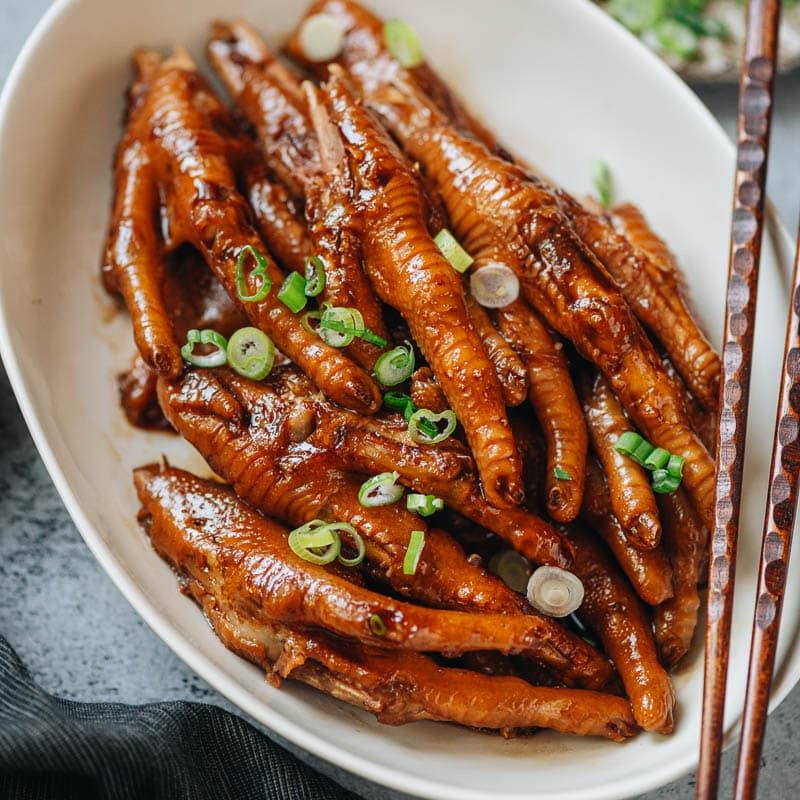
“Chicken toes on my plate? No thanks!” Yet these claw-shaped appetizers are beloved across China, the Philippines, Jamaica, South Africa, and beyond. After removing claws and deep frying, they’re typically braised in savory sauce until fall-off-the-bone tender.
Though mostly skin, tendon and cartilage with minimal meat, the collagen-rich morsels become gelatinous and absorb flavors beautifully. The fun lies in nibbling around tiny bones to extract every bit of sauce-coated goodness – a surprisingly addictive textural experience!
1. Lutefisk
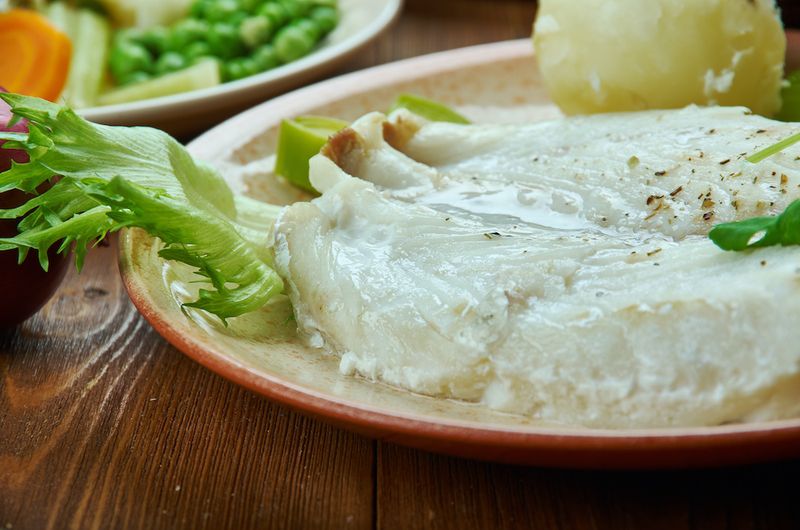
Scandinavian dried cod soaked in lye (yes, the caustic chemical used to make soap) until it transforms into quivering, gelatinous fish jello doesn’t exactly scream “delicious.” The alkaline solution breaks down proteins, creating a texture that’s simultaneously firm and wobbly.
Though nearly flavorless on its own, traditional accompaniments of bacon, peas, potatoes, and mustard sauce create a beloved holiday meal for Norwegian-Americans. The strange preparation method dates back to Viking times, proving some culinary traditions survive despite their bizarre nature!

